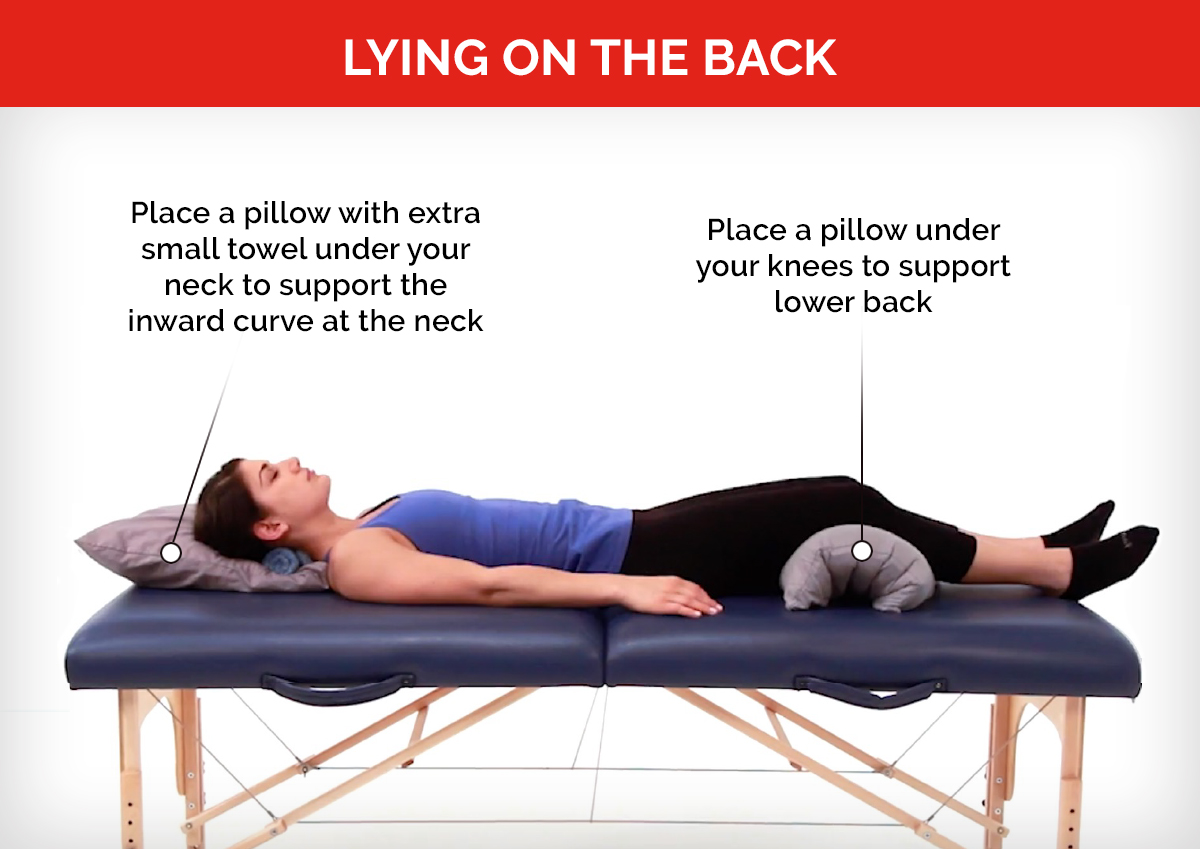Tips to Reduce Sleep-Related Back Pain
Spine experts explain what causes back pain when you sleep and what you can do to wake up with a healthy spine.

Back pain is one of the most common types of pain reported in the United States. Most people — up to eight out of 10 — will have at least one episode of back pain during their lives. While various factors contribute to back pain, how you sleep — from your sleep position to the pillow or mattress you choose — can be a cause.
Pain and sleep are interconnected. Back pain can make it harder to get a good night’s sleep, while some research shows that insufficient sleep can exacerbate pain in addition to causing other health problems, from impaired focus to increased risk of cardiovascular disease.
The COVID-19 pandemic has only made matters worse. Disrupted daily routines and anxiety about the pandemic have fueled insomnia, while working from home without proper office equipment has caused more people to experience back and neck aches and pains.
Health Matters spoke to Dr. Clark Smith, a neck and back pain medicine specialist with NewYork-Presbyterian Och Spine, and Dr. Kelly Grimes, a physical therapist with Columbia University Irving Medical Center, about what causes sleep-related back pain and what you can do to prevent it.
There is no right or wrong sleeping position
Everyone has unique, individual variations in terms of the shapes of our spines and individual flexibilities. This is called “body anthropometrics,” says Dr. Grimes, so what’s most important is to find a sleep position that balances support for your spine with comfort and allows you to get a good night’s sleep.

Dr. Clark Smith
Pick the position that’s best for you
Whatever position a person chooses, having a neutral spine is important, says Dr. Smith. This means there is no major bend in your neck or back.
When you lie down, your back either flexes a little bit or extends, meaning it leans forward or leans back, depending on your position. For a lot of people, the easiest way to achieve a neutral spine is to lie on your side with a pillow, either between your knees or a pillow that you’re hugging, and not have your neck or spine contorted in any way, says Dr. Smith. However, people with some conditions, including hip conditions, shoulder bursitis, or hip bursitis, can have trouble with side sleeping. While there’s no one best position for everyone, lying on the side is usually going to be the healthiest thing in terms of spine care for most people.
Mattresses and pillows matter
Some people prefer a firmer mattress, while others prefer something with more moldability, like a foam mattress, but generally, you want a mattress that’s in good condition, says Dr. Grimes. If you’re sleeping on a sagging mattress and you’re starting to have problems sleeping, rotating the mattress or getting a mattress topper could help.
Your body will react to mattresses in different ways. If you’re lying flat on a hard mattress, your spine may be neutral, with no bending or twisting. This may be beneficial for someone who needs extra support. But if you’re lying flat on your back on a soft mattress, your lumbar spine might bend forward like you’re looking down, which is called “flexion,” says Dr. Smith. This compresses the discs, and that can make disc pain worse. If you’re lying on your stomach in a soft bed, that could extend your back. This position might feel good for the low back in people whose spines bend forward, but it could cause discomfort for others.
Pillows should also help you achieve a neutral spine, adds Dr. Smith. Stomach sleepers usually prefer a thin pillow so their neck isn’t contorted, while back and side sleepers can tolerate a thicker pillow as long as their spine stays neutral.
Small changes to your sleep position can have a big impact
If you’re sleeping on your back and that’s not working out, try sleeping on your side, says Dr. Smith. You could even place a pillow next to your back so if you move from your side to your back in the middle of the night, you’d have a gentle reminder to stay on your side, adds Dr. Grimes. If you’re a stomach sleeper and you have neck pain, try using a skinnier pillow so your neck is not turned back as much, or if you’re using two pillows, use only one.
Props like a pillow or rolled-up towel can also be helpful, says Dr. Grimes. If you sleep on your back, you might get an arch in your back in that position. If that’s causing pain, place a pillow or two underneath the knees, which helps with low back pressure, and/or place a little towel roll underneath the arch of the low back to support that gap.
Similarly, stomach sleepers can put a small pillow under their stomach to help create a neutral spine. These fixes mean a person can still sleep in their preferred position, but they’re not putting as much stress on the tissues in their spine throughout the night.
A specialist can help you figure out if your sleep position is causing your pain
An expert can help determine the cause of your pain, says Dr. Grimes, though she adds that it might take a bit of detective work. They might ask questions about your sleep positions and if you feel any similar pain connected to sitting or standing, which can help them narrow down the cause of your pain.
It is also important to investigate whether other medical issues are interfering with sleep. If somebody is waking up frequently because of sleep apnea, their back pain might be getting worse because they’re not getting restorative sleep. For some people, immobility while they sleep rather than a particular sleep position could cause pain, says Dr. Smith. With osteoarthritic conditions, for example, joints may swell a little bit when they’re not mobile. So getting those joints moving again can be painful when you go to the bathroom at night and get up in the morning. Some people may report similar discomfort if they go to a movie, so that pain may not be related to your sleep position.

Dr. Kelly Grimes
Try easy mobility routines before you go to bed and when you wake up
Today, there’s a lack of separation between work and home for many due to COVID-19, so it’s easy for people to go right from the computer to bed. This is why it’s important to build in behaviors and habits, like a gentle mobility routine, into an intentional nighttime wind-down routine, says Dr. Grimes. The “motion is lotion” concept means you’re bringing nutrition and blood flow to the tissues in your spine when you move. Here are simple stretches and exercises that you can do before bed to loosen up your back.
When you wake up in the morning, if you’re lying on your back, squeeze your abdomen down into the bed to engage those core muscles. This is called “abdominal bracing,” says Dr. Smith. Or bring your knees to your chest to loosen up your hips a little bit. If you can tolerate it, try some supine knee twists, where you lie on your back and turn your knees to one side. Like the Tin Man with no oil, the spine and other joints can feel stiff and creaky after a period of immobility when you get up, so just giving yourself a little bit of extra time in the morning can also help. Often symptoms will improve once you get moving.
Clark Smith, M.D., MPH, is an attending physiatrist at NewYork-Presbyterian/Columbia University Irving Medical Center and the John A. Downey Associate Professor of Rehabilitation and Regenerative Medicine at Columbia University Vagelos College of Physicians and Surgeons. A fellowship-trained physiatrist, Dr. Smith specializes in treating patients with acute and chronic sports and spine injuries. Dr. Smith is board certified in both physical medicine and rehabilitation and pain medicine.
Kelly Grimes, DPT, is a Doctor of Physical Therapy at Columbia University Irving Medical Center who specializes in musculoskeletal pain, with a particular interest and expertise in spine care and scoliosis management across the lifespan. Her practice focuses on individualized treatment plans built around each patient’s unique goals —relying on assessments grounded in movement analysis, and a collaborative, hands-on style that considers the whole patient rather than just a painful or troublesome body part.



